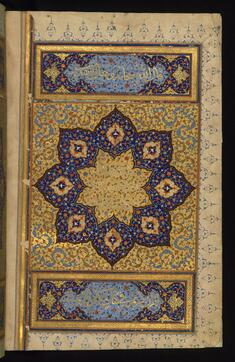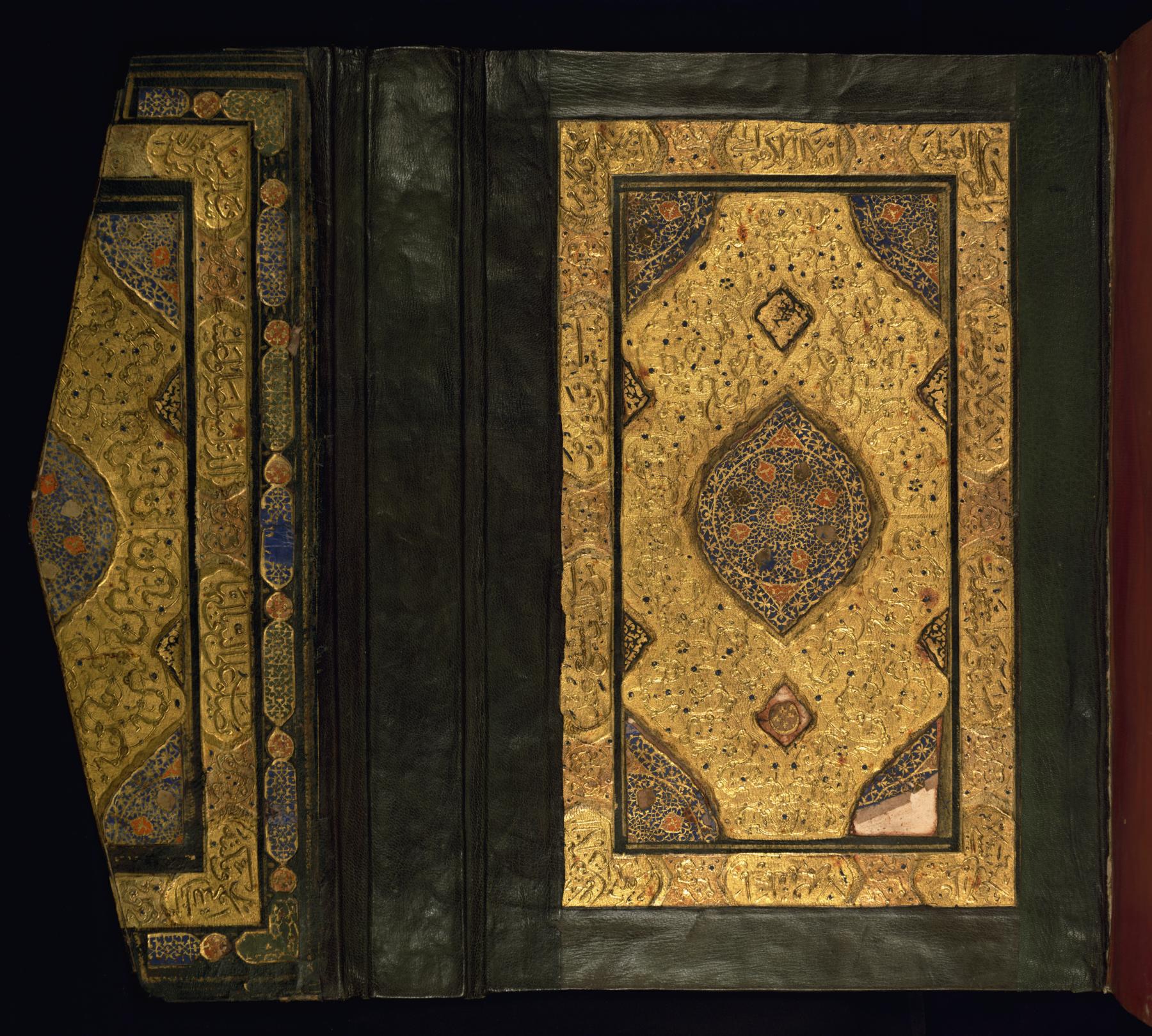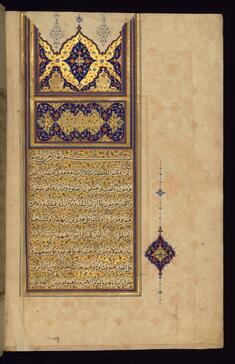Qur'an
(Manuscripts and Rare Books, Islamic World , Islamic Manuscripts)
Walters manuscript W.569, an illuminated copy of the Qur'an, was produced in the 11th century AH/AD 17th in Iran. Apart from using a number of scripts, such as Naskh, Muhaqqaq, and Tawqi', the manuscript features 6 pairs of decorated pages; 2 illuminated headpieces; and chapter headings, interlinear illumination, and marginal decoration. The Qur'anic text begins on fol. 2b and ends on fol. 331a. It is followed by a prayer (du'a') and a table of divination (taf'ul) in Arabic and Persian (fols. 332b-333a).The black leather binding has a central piece in the form of a diamond with pendants on 4 sides. The inner boards, with their traditional dentelle decoration, feature text from the "verse of the throne" (ayat al-kursi), 2:255-6, which is inscribed in the outer frame.
Provenance
Provenance (from the French provenir, 'to come from/forth') is the chronology of the ownership, custody, or location of a historical object. Learn more about provenance at the Walters.
Henry Walters, Baltimore [date and mode of acquisition unknown]; Walters Art Museum, 1931, by bequest.
Exhibitions
| 2007 | Speaking the Word of God: Illuminated Korans from the Walters Art Museum. The Walters Art Museum, Baltimore. |
| 1997 | The Divine Word and Sacred Sites of Islam. The Walters Art Gallery, Baltimore. |
| 1988 | Masterpieces of Ornament. The Walters Art Gallery, Baltimore. |
Geographies
Iran (Place of Origin)
Measurements
Folio H: 15 3/16 x W: 10 1/16 in. (38.5 x 25.5 cm)
Credit Line
Acquired by Henry Walters
Location in Museum
Not on view
Accession Number
In libraries, galleries, museums, and archives, an accession number is a unique identifier assigned to each object in the collection.
In libraries, galleries, museums, and archives, an accession number is a unique identifier assigned to each object in the collection.
W.569
Do you have additional information?
Related Objects
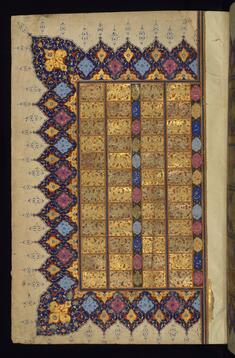
Left Side of a Double-page Table of Divination (Bibliomancy or tafa'ul)

Leaf from Qur'an: Right Side of a Double-page Table of Divination (Bibliomancy or tafa'ul)
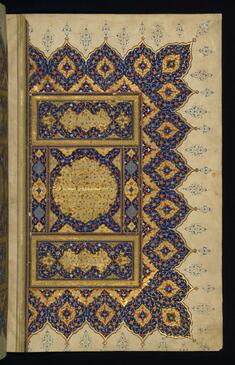
Right Side of an illuminated Finispiece with Inscribed Prayer
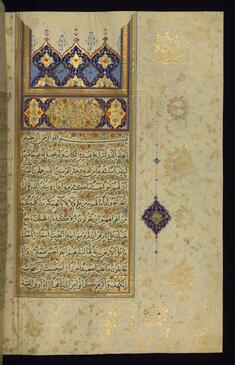
Decorated Incipit Page with Headpiece Introducing Chapter 18
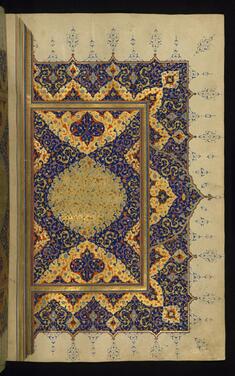
Illuminated Page with Verses from the End of Chapter 17
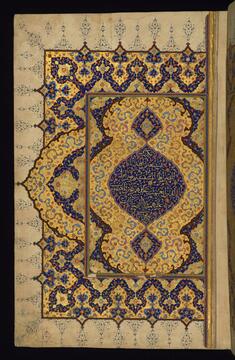
Left Side of a Double-page Opening Inscribed with Verses of Chapter 1

Right Side of a Double-page Opening Inscribed with Verses of Chapter 1
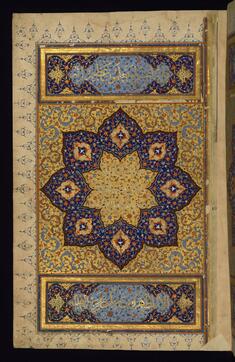
Left Side of a Double-page Illuminated Frontispiece
